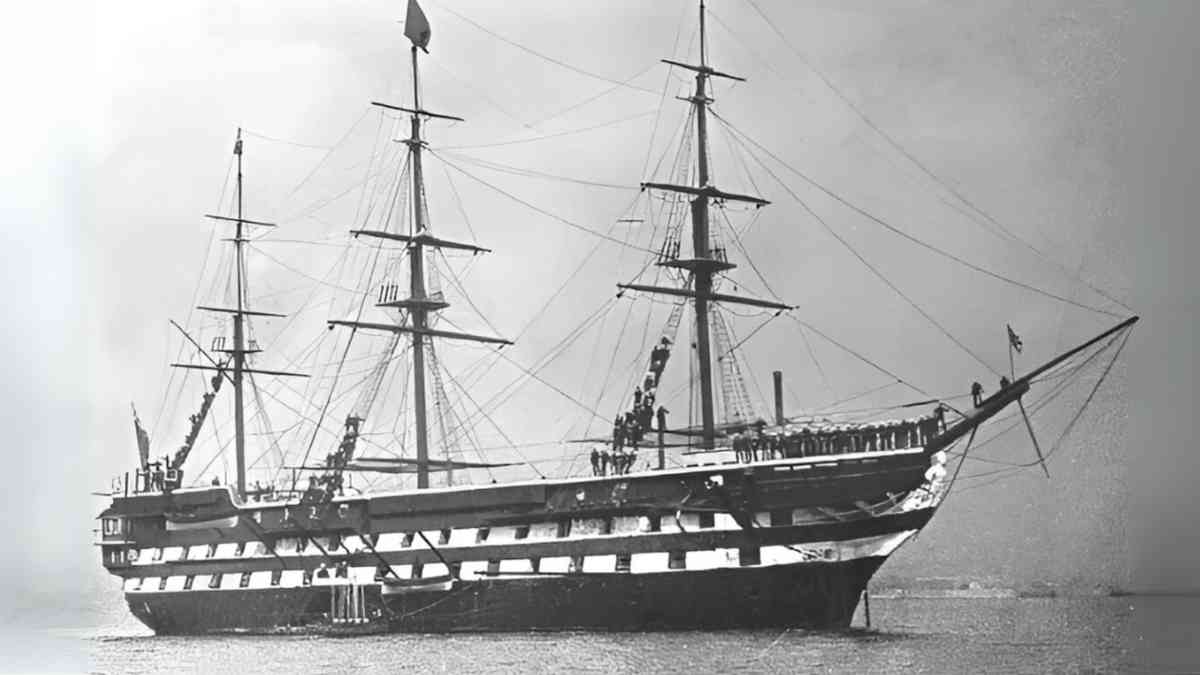HMS Conway: The Storied Life of Britain’s Most Iconic Naval Training Ship

HMS Conway was far more than just a vessel; she was a floating academy, a wartime survivor, and a symbol of maritime excellence. Spanning over a century of history, HMS Conway evolved from a powerful Royal Navy warship to an elite training ship for Merchant Navy cadets. Her legacy lives on in the memories of those who trained aboard her and in the historical importance she holds in British naval education.
The Birth of HMS Conway: From HMS Nile to Naval Legacy
Before she became HMS Conway, the vessel was originally christened HMS Nile, named after the legendary Battle of the Nile. She was launched in 1839 from Plymouth Dockyard as a 90-gun, two-deck, second-rate ship of the line in the Royal Navy.
With a robust wooden hull and an impressive armament, HMS Nile was designed for fleet battles. However, by the mid-19th century, the age of sail was giving way to steam. In 1854, she underwent a significant transformation and was fitted with a screw-propelled steam engine, reflecting the Royal Navy’s technological evolution.
Although HMS Nile saw limited combat, she served important functions throughout the British Empire, including stations in the West Indies and North America. As her combat role diminished, a new purpose awaited her — one that would ensure her name would be etched in maritime history.
Conversion into HMS Conway: A New Role on the River Mersey
In 1876, the Royal Navy lent HMS Nile to the Mercantile Marine Service Association. She was renamed HMS Conway and permanently moored in the River Mersey, near Rock Ferry.
Her new mission? To prepare boys for life in the Merchant Navy.
This was not a mere rebranding — it marked a shift in maritime education. With the advent of global trade and steam shipping, the need for disciplined, knowledgeable officers was greater than ever. HMS Conway answered that call, turning into a floating boarding school for cadets, typically aged 13 to 15.
Life Aboard HMS Conway: Discipline, Drill, and Determination
Cadet life aboard HMS Conway was structured and rigorous. Students woke up early, followed strict timetables, and participated in a blend of academic education and practical seamanship training.
Daily Routine
-
Morning muster and inspections ensured cleanliness and punctuality.
-
Academic classes included mathematics, navigation, chart work, maritime law, and meteorology.
-
Seamanship drills taught students to handle sails, knots, rigging, and ship maintenance.
-
Physical training kept cadets fit and disciplined.
Despite the challenges, many cadets looked back on their time with affection. The camaraderie, resilience, and naval discipline they acquired stayed with them for life.
Relocation During World War II: HMS Conway in the Menai Strait
The outbreak of World War II brought new threats to Liverpool and the River Mersey. As German bombers targeted docks and ships, HMS Conway’s exposed position put her and her cadets in danger.
In 1941, the ship was relocated to the Menai Strait, near Anglesey in North Wales. This picturesque but perilous location — known for its shifting tides and the infamous “Swellies” — offered safety from bombing but presented its own navigational hazards.
By 1949, she was permanently moored off Plas Newydd, the seat of the Marquess of Anglesey. Here, a shore-based facility was established to supplement the training ship. This hybrid approach of sea-based and land-based training allowed for expanded educational offerings.
The Wreck of HMS Conway: A Tragic End to a Historic Ship
In April 1953, HMS Conway was to be towed to Birkenhead for refitting. This meant passing once again through the treacherous Swellies, a stretch of water infamous for its whirlpools and shifting channels.
Despite experienced pilots aboard, a combination of strong tides, engine failure, and navigational miscalculations led the ship to run aground. She struck submerged rocks and broke her back — suffering irreparable structural damage.
Efforts were made to salvage her, but in 1956, a fire consumed much of what remained. The grand wooden ship that had trained thousands of young cadets was gone — a ghost of oak and iron swallowed by flames and time.
The Shore-Based Continuation and Eventual Closure
Even after her wreck, the institution known as HMS Conway lived on. Training continued onshore at Plas Newydd in dedicated buildings built for cadet life. These facilities included dormitories, classrooms, a gymnasium, and a chapel.
However, changing needs in the maritime industry, declining cadet enrollment, and budget constraints eventually led to the closure of the HMS Conway School in 1974.
The site was later transformed into the Conway Centre, a thriving arts and outdoor education venue still operating today.
Notable Alumni of HMS Conway
HMS Conway’s reputation as a prestigious maritime school is reflected in the many distinguished figures who trained aboard her. Some of the most notable include:
-
Captain Matthew Webb: The first man to swim the English Channel.
-
John Masefield: Poet Laureate of the United Kingdom.
-
Buster Crabb: Royal Navy frogman and intelligence operative.
-
Sir Clive Woodward: Rugby World Cup-winning coach.
-
Iain Duncan Smith: Former Leader of the Conservative Party and cabinet minister.
These individuals reflect the wide-reaching impact of the discipline and leadership values instilled aboard the ship.
HMS Conway’s Cultural and Historic Legacy
HMS Conway remains an enduring part of British maritime folklore. Former cadets maintain strong bonds through associations and reunions, and a wealth of literature, photographs, and memorabilia continue to preserve her story.
Her wreckage, though mostly cleared, still captures the imagination of divers and historians. Museums and archives across Britain maintain collections related to HMS Conway, including logbooks, uniforms, and personal journals.
More importantly, she lives on in the values of resilience, camaraderie, and responsibility that she imparted to generations of seafarers.
Conclusion
The story of HMS Conway is one of transformation, endurance, and legacy. From her origins as HMS Nile — a warship of the age of sail — to her final days as a charred wreck in the Menai Strait, she played a crucial role in shaping Britain’s maritime future.
She wasn’t just a ship. She was a school, a community, a rite of passage. While her timbers may be gone, the spirit of HMS Conway sails on in every officer who once trained on her decks.



